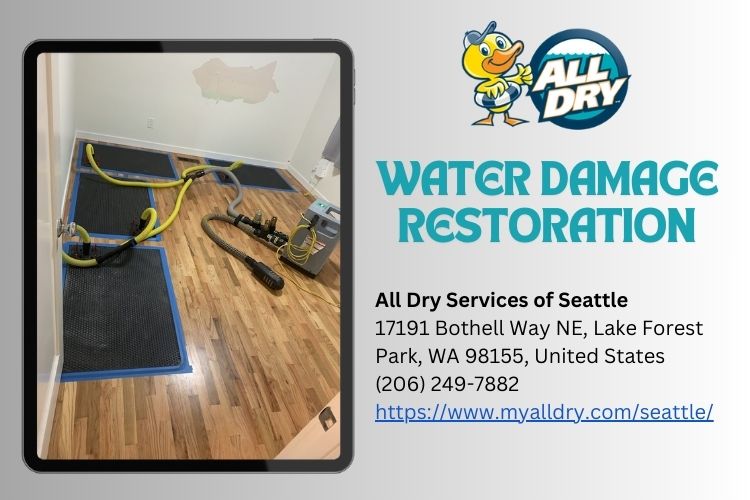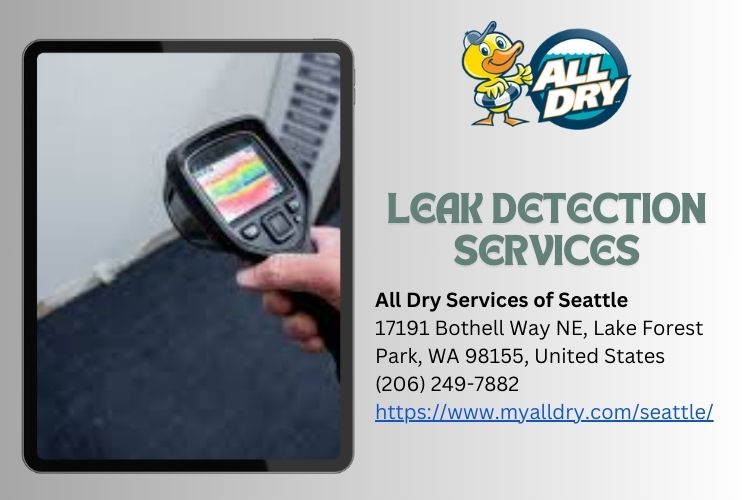Introduction
Water damage can be a homeowner's worst nightmare. When floods, leaky pipes, or heavy rain infiltrate your property, the structural integrity of your home can be compromised. Even after water damage restoration, there’s a persistent threat lurking in the shadows: mold. This article will delve into Preventing Mold Growth: Essential Steps After Water Damage Restoration in Lake Forest Park, offering practical advice and insights to help you keep your home safe and healthy.
Understanding Water Damage Restoration
What is Water Damage Restoration?
Water damage restoration is a process designed to restore a home affected by flooding or water leakage. It involves removing excess water, drying out affected areas, and restoring the structure to its pre-damaged condition. Effective restoration is crucial not only for water damage restoration Seattle WA aesthetics but also for preventing long-term issues such as mold growth.
Importance of Professional Help
While some homeowners may attempt DIY restoration, hiring professionals ensures that every step is executed correctly. Professionals utilize specialized equipment and techniques that are often beyond the capabilities of an average homeowner.
Mold Growth: The Silent Threat Post-Restoration
What Causes Mold to Grow?
Mold thrives in damp environments where moisture levels are high. After water damage occurs, even slight remnants of moisture can act as a breeding ground for mold spores. Understanding how and why mold grows is essential for effective prevention.
The Dangers of Mold
Mold isn't just an unsightly blemish; it can pose serious health risks. Different types of mold produce allergens and irritants that may cause respiratory issues or allergic reactions. In severe cases, certain molds can produce mycotoxins that are harmful when inhaled.
Preventing Mold Growth: Essential Steps After Water Damage Restoration in Lake Forest Park
Step 1: Immediate Response
Act Quickly
The sooner you act after discovering water damage, the less likely you are to face significant mold growth. Ideally, restoration should begin within 24-48 hours to minimize risk.
Identify Affected Areas
Conduct a thorough inspection to identify all areas impacted by water. This includes hidden spots like behind walls or under flooring.
Step 2: Thorough Drying Process
Use Industrial Fans and Dehumidifiers
After water removal, employ industrial fans and dehumidifiers to dry out wet surfaces thoroughly. Aim for a humidity level below 60% during this process.
Monitor Moisture Levels
Utilize moisture meters to monitor humidity levels continuously until they return to normal levels (30-50%).
Step 3: Cleaning and Sanitizing
Clean Surfaces
Use appropriate cleaning agents on all surfaces that were affected by water—this includes floors, walls, and furniture.
Consider Anti-Microbial Solutions
For added protection against potential mold spores, consider using anti-microbial solutions during your cleaning process.
Step 4: Repair Damaged Structures
Address Structural Issues
Repair any damaged walls or ceilings promptly. Ensure that all materials used are resistant to mold growth whenever possible.
Replace Insulation if Necessary
If insulation has been compromised by water damage, replacing it is vital since wet insulation can trap moisture leading to future problems.
Step 5: Improve Ventilation
Ensure Air Circulation
Good ventilation reduces humidity levels significantly. Open windows whenever possible and use exhaust fans in bathrooms and kitchens.
Install Ventilation Systems
Consider installing ventilation systems that regulate airflow throughout your home effectively.
Step 6: Regular Maintenance Checks
Conduct Inspections Periodically
Regularly check areas prone to moisture accumulation such as basements, attics, and crawl spaces for any signs of dampness or mold growth.
Keep Gutters Cleaned
Ensure gutters are free from debris so they can properly channel rainwater away from your home’s foundation.
Common Myths About Mold Prevention
Myth 1: Mold Only Grows in Dirty Homes
Contrary to popular belief, cleanliness does not guarantee mold-free conditions; it's primarily about controlling moisture levels.
Myth 2: Bleach Kills All Molds
While bleach might kill surface molds temporarily, it doesn’t penetrate porous materials where roots may remain and regrow later on.
Signs of Hidden Mold
Visual Signs
Check for discoloration on walls or ceilings which could indicate hidden mold growth even if no visible signs appear initially.
Smell Test
A musty odor is often one of the first indicators of hidden mold presence; trust your nose!


When to Call Professionals for Mold Remediation?
If extensive areas are affected or if you sense any health concerns arising from exposure—it's best practice to hire certified professionals specializing in mold remediation services immediately after identifying potential issues!
FAQs about Preventing Mold Growth After Water Damage
Q1: How long does it take for mold to grow after water damage?
A1: Mold can begin growing within 24-48 hours after wet conditions arise if proper measures aren't taken promptly!
Q2: Can I prevent all molds from growing?
A2: While complete prevention isn't feasible due diligence regarding moisture control greatly reduces risks associated with various types of molds!
Q3: Should I worry about black mold specifically?
A3: Black mold can be particularly harmful but focusing on overall moisture management effectively mitigates risks associated with all types of molds!
Q4: How do I know if I'm experiencing health issues due to mold?
A4: Symptoms include coughing sneezing headaches fatigue respiratory distress which may indicate underlying exposure—consult medical professionals if concerned!
Q5: Is it safe to remove small patches of visible mold myself?
A5: Small isolated patches might be manageable but ensure proper safety equipment (masks gloves) before attempting any DIY removal; otherwise consult professionals for large infestations!
Q6: What products are effective against stubborn molds?
A6: Commercial-grade fungicides designed specifically for eliminating tough molds exist—always follow manufacturer guidelines when applying these products safely!
Conclusion
Preventing mold growth post-water damage restoration is crucial for maintaining a healthy living environment in Lake Forest Park. By following these essential steps outlined above—from immediate response actions through regular maintenance checks—you can better safeguard your home against this insidious threat that often follows water-related incidents. Remember that while taking steps yourself is important enlisting professional help when necessary ensures comprehensive care leaving no stone unturned! Prioritize prevention—it’s always easier than dealing with consequences later down the line!
Contact Us
All Dry Services of Seattle
Address: 17191 Bothell Way NE, Lake Forest Park, WA 98155, United States
Phone number: (206) 249-7882
Website: myalldry.com/seattle